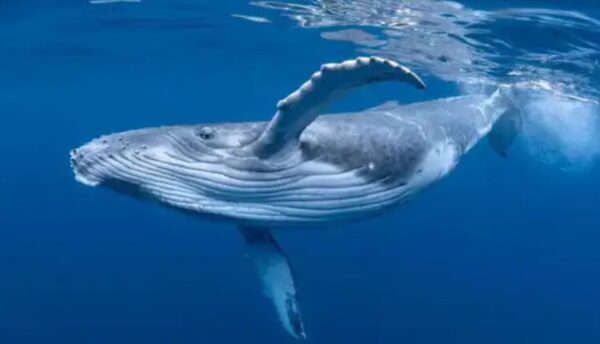Lifestyle
Why whale urine is important for the ocean

In a time when ocean health is constantly in the spotlight, whether due to coral reef loss, plastic pollution, or declining fish populations, a lesser-known yet vital piece of the puzzle is starting to make waves in the scientific world. It’s not a high-tech solution or a global treaty. It’s whale urine.
Yes, whale pee.
While it may sound strange, new research is uncovering how the simple act of urination by some of the ocean’s largest animals is helping to keep marine ecosystems functioning. And it’s not just a biological quirk– it’s a critical natural process that’s been overlooked for years.
Whales do more than just swim around
For years, scientists have known that whale feces helps feed ocean life, especially near the surface where plankton grows with sunlight. But now, a new study, published in Nature Communications, is shining a light on something even more powerful– whale pee and the nutrients it releases. “The big surprise of the study is that urine far outweighs the other sources of nitrogen,” like carcasses, for example, says co-lead author Joe Roman, PhD, a conservation biologist at the University of Vermont.
Nitrogen is key to life in the ocean, and whales are surprisingly big contributors. Through their urine, they move huge amounts of nitrogen, especially in tropical and subtropical areas where it’s usually in short supply
How whale pee keeps the ocean fed
Every year, baleen whales– like blue, humpback, and fin whales– make long journeys from the cold polar seas, where they eat a lot, to warm tropical waters to breed. In the cold, they pack on fat for energy. But once they reach the breeding areas, they stop eating and live off those fat stores. As their bodies burn that fat, they produce waste, mainly in the form of urine. “That’s why they’re releasing nitrogen,” says Roman.
This makes whales important carriers of nutrients. The study found that through their waste– urine, carcasses, and placentas– baleen whales release around 3,784 tons of nitrogen and over 46,000 tons of organic matter into parts of the ocean that don’t have much of it. Most of the nitrogen comes from their pee. Just one fin whale can release up to 250 gallons of urine in a single day.
Feeding the base of the food chain
What makes whale urine so important for the ocean isn’t just how much of it there is—it’s what’s in it. It’s packed with nitrogen and phosphorus, nutrients that help tiny ocean plants called phytoplankton grow. These tiny organisms are the base of the marine food chain and also absorb a lot of carbon dioxide, helping to regulate the Earth’s climate.
“These nutrients stimulate phytoplankton growth at the ocean surface and also enrich deep-sea ecosystems,” says Heidi Pearson, PhD, professor of marine biology at the University of Alaska Southeast, who was not involved in the study, as quoted by nationalgeographic(dot)com. So, when whales relieve themselves in nutrient-poor regions, they are quite literally fertilizing the ocean and supporting entire ecosystems.
A shrinking contribution since whaling began
Today, there are far fewer whales in the ocean than there used to be– and that’s affecting ocean health. Commercial whaling in the 20th century wiped out huge numbers of whales. Although bans in the 1980s helped stop the rapid decline, many whale populations still haven’t fully recovered. “Some whale populations have still not recovered from industrial whaling, and most whales are imperiled by a myriad of threats, including vessel strikes, fisheries entanglement, pollution, and climate change,” says Pearson, as quoted by nationalgeographic(dot)com. Scientists believe whales now provide only about one-third of the nutrients they once did before large-scale whaling. That means the ocean has been missing one of its key natural nutrient sources for decades.






